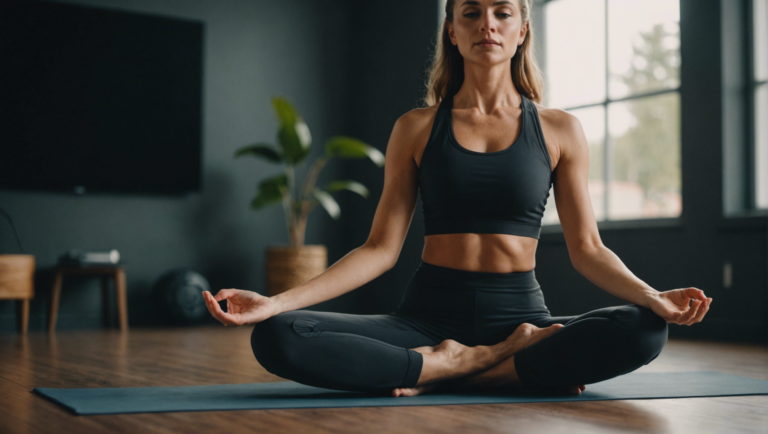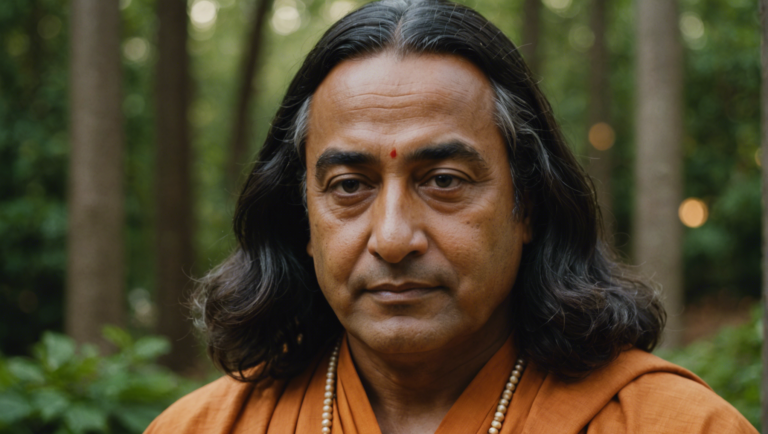Step-by-Step Guidelines On Cleaning A Manduka Yoga Mat
Step-by-Step Guidelines on Cleaning a Manduka Yoga Mat
Cleaning a Manduka Yoga Mat can help maintain its quality and hygiene, ensuring that you have a pleasant and clean surface for your yoga practice. Regular cleaning not only prolongs the life of your mat but also provides you with a fresh and inviting space to practice yoga. Below are step-by-step guidelines on how to effectively clean your Manduka Yoga Mat.
Step 1: Gather Your Cleaning Materials
Before you start cleaning your Manduka Yoga Mat, gather all the necessary cleaning materials. You will need:
- A large bowl or container
- Mild detergent or a gentle yoga mat cleaner
- A soft brush or sponge
- Clean, dry towels
Step 2: Prepare the Cleaning Solution
Fill the large bowl or container with warm water. Add a small amount of mild detergent or a recommended yoga mat cleaner to the water. Avoid using harsh chemicals or cleaning agents that can damage the material of the yoga mat.
Step 3: Clean the Mat
Dip the soft brush or sponge into the cleaning solution. Gently scrub the surface of the yoga mat with the brush, focusing on areas with visible dirt, sweat, or stains. Avoid using excessive force to prevent damaging the mat’s texture or structure.
Step 4: Rinse Thoroughly
After cleaning the entire surface of the mat, rinse it thoroughly with clean water to remove any soap residue. You can do this by wiping the mat with a clean, damp towel or by using a spray bottle to rinse off the soap.
Step 5: Dry the Mat
Lay the yoga mat flat on a clean, dry towel to remove excess water. Roll up the towel with the mat inside and gently press to absorb the moisture. Hang the mat in a well-ventilated area or lay it flat to air dry completely before rolling it up for storage.
Step 6: Maintenance Tips
- Avoid machine washing or drying your Manduka Yoga Mat as it can damage the material.
- Regularly spot clean your mat with a gentle cleaner after each use to prevent the buildup of dirt and odors.
- Allow your mat to fully dry before rolling it up to prevent mold or mildew growth.
- Consider using a yoga mat spray or sanitizer to keep your mat fresh between deep cleanings.
By following these step-by-step guidelines on cleaning your Manduka Yoga Mat, you can ensure that your mat remains in top condition, providing you with a clean and comfortable surface for your yoga practice. Regular maintenance and proper cleaning will not only extend the life of your mat but also enhance your overall yoga experience.
Importance of Regularly Cleaning Your Yoga Mat
Regularly cleaning your yoga mat is essential for maintaining hygiene, extending its lifespan, and enhancing your overall yoga experience. A clean yoga mat provides a safe and comfortable surface for your practice, free from dirt, bacteria, and unpleasant odors. By incorporating a simple cleaning routine into your yoga practice, you not only take care of your mat but also prioritize your health and well-being.
Why Cleaning Your Yoga Mat Regularly Is Important
Regularly cleaning your yoga mat helps remove sweat, bacteria, and dirt that accumulate during your practice. Over time, these contaminants can build up and create an unhygienic surface that may lead to skin irritations or infections. Additionally, a dirty yoga mat can emit unpleasant odors, affecting your focus and relaxation during yoga sessions.
Step-by-Step Guidelines on Cleaning a Yoga Mat
1. Gather Your Supplies
Before you begin cleaning your yoga mat, gather the necessary supplies. You will need a gentle or natural mat cleaner, a soft cloth or sponge, and access to clean water. Avoid using harsh chemicals or abrasive scrubbers that could damage the mat’s surface.
2. Preparing the Cleaning Solution
Mix the gentle or natural mat cleaner with water in a spray bottle according to the manufacturer’s instructions. Alternatively, you can create a DIY cleaning solution using water and a few drops of mild soap or essential oils with antibacterial properties.
3. Wipe Down the Mat
Lay your yoga mat flat on a clean surface. Spray the cleaning solution evenly across the mat’s surface. Using a soft cloth or sponge, gently scrub the mat to remove any dirt or sweat buildup. Focus on areas where your hands and feet make contact during practice.
4. Rinse and Dry
After scrubbing, rinse the yoga mat thoroughly with clean water to remove any residue from the cleaning solution. Hang the mat to air dry in a well-ventilated area, avoiding direct sunlight, which can damage the material. Ensure the mat is completely dry before rolling it up for storage.
Benefits of Regular Yoga Mat Cleaning
-
Improved Hygiene: Regular cleaning eliminates bacteria and germs, reducing the risk of skin infections.
-
Prolonged Lifespan: Cleaning your yoga mat regularly helps maintain its quality and durability.
-
Enhanced Grip: A clean mat offers better traction and grip during yoga poses, promoting stability and safety.
-
Fresh Fragrance: Cleaning your yoga mat regularly keeps it smelling fresh, enhancing your overall practice experience.
In
Regularly cleaning your yoga mat is a simple yet crucial practice that contributes to a healthier and more enjoyable yoga experience. By following these step-by-step guidelines and making mat hygiene a priority, you can ensure that your yoga practice remains fulfilling and beneficial for both your mind and body.
Common Mistakes to Avoid When Cleaning a Yoga Mat
When it comes to cleaning your yoga mat, there are several common mistakes that practitioners often make. Avoiding these errors can help maintain the quality and longevity of your mat, as well as ensure a clean and hygienic surface for your practice. Here are some step-by-step guidelines on how to properly clean your yoga mat and the mistakes you should watch out for:
Using Harsh Chemicals
When cleaning your Manduka yoga mat, avoid using harsh chemicals such as bleach, alcohol, or strong detergents. These substances can break down the material of the mat, leading to damage and reducing its lifespan. Instead, opt for gentle, natural cleaning solutions that are specifically designed for yoga mats or a homemade solution of water and mild soap.
Not Reading the Manufacturer’s Instructions
One common mistake many people make is not reading the manufacturer’s cleaning instructions for their yoga mat. Different materials may require specific care, and using the wrong cleaning method can damage the mat. Before cleaning your Manduka yoga mat, check the instructions provided by the manufacturer to ensure you are using the correct cleaning process.
Using Excessive Water
Using too much water when cleaning your yoga mat can saturate the material and lead to mold or mildew growth. It is essential to use a damp cloth or spray bottle to lightly mist the mat with your cleaning solution. After cleaning, make sure to thoroughly dry the mat before rolling it up to prevent moisture buildup.
Skipping Regular Cleaning
Another mistake to avoid is not cleaning your yoga mat regularly. Sweat, dirt, and oils from your skin can build up on the mat over time, creating an unhygienic surface for your practice. Aim to clean your Manduka yoga mat after every few uses or at least once a week, depending on how frequently you practice.
Using Rough Sponges or Brushes
When cleaning your yoga mat, avoid using rough sponges or brushes that can scratch or damage the material. Opt for a soft cloth or a gentle sponge to wipe down the surface of the mat. Gently scrub any stubborn dirt or stains, taking care not to apply too much pressure.
Not Allowing Sufficient Drying Time
After cleaning your yoga mat, make sure to allow it sufficient time to dry completely before rolling it up for storage. Hanging the mat or laying it flat in a well-ventilated area can help speed up the drying process. Avoid rolling up a damp mat, as this can trap moisture and encourage bacterial growth.
By following these step-by-step guidelines and avoiding these common mistakes, you can keep your Manduka yoga mat clean, hygienic, and in top condition for your practice. Remember to treat your yoga mat with care and attention to ensure it serves you well for years to come.
Using Natural and Eco-Friendly Cleaners for Your Yoga Mat
Natural and eco-friendly cleaners are a great choice for maintaining the cleanliness of your yoga mat while also being mindful of the environment. Using these types of cleaners not only helps to preserve the quality of your mat but also reduces the exposure to harsh chemicals during your practice. Here are some step-by-step guidelines on how to clean a Manduka yoga mat using natural and eco-friendly cleaners.
Understanding the Importance of Natural Cleaners
When it comes to cleaning your yoga mat, choosing natural and eco-friendly cleaners is essential for several reasons. Traditional cleaners often contain chemicals that can be harsh on the mat’s material and may leave behind residue that can be absorbed through the skin during practice. Natural cleaners, on the other hand, are made from plant-based ingredients that are gentle yet effective in removing dirt, sweat, and bacteria from the mat’s surface.
Step 1: Gather Your Cleaning Supplies
Before you begin cleaning your Manduka yoga mat, make sure you have all the necessary supplies on hand. For natural cleaning, you will need white vinegar, water, a spray bottle, essential oils (such as tea tree oil or lavender oil), and a clean cloth or towel.
Step 2: Create Your Cleaning Solution
To make your natural yoga mat cleaner, mix equal parts water and white vinegar in a spray bottle. Add a few drops of your chosen essential oil for a pleasant scent and added antibacterial properties. Shake the bottle well to ensure the ingredients are thoroughly combined.
Step 3: Spot Test
Before applying the cleaning solution to the entire mat, do a spot test in a small, inconspicuous area to ensure that the solution does not cause any damage or discoloration to the mat.
Step 4: Clean Your Yoga Mat
Spray the cleaning solution generously onto the surface of the mat. Use a clean cloth or towel to wipe down the mat, focusing on any areas with visible dirt or stains. For stubborn stains, you can gently scrub the area with a soft-bristled brush.
Step 5: Air Dry
Once you have cleaned the mat, hang it in a well-ventilated area to air dry. Avoid direct sunlight, as this can damage the mat’s material over time. Allow the mat to dry completely before rolling it up for storage.
Step 6: Regular Maintenance
To keep your Manduka yoga mat clean and fresh, it is essential to establish a regular cleaning routine. Aim to clean your mat after every practice session to prevent the buildup of sweat, bacteria, and dirt.
By following these step-by-step guidelines and using natural and eco-friendly cleaners, you can ensure that your Manduka yoga mat remains clean, fresh, and free from harmful chemicals. Prioritizing the use of natural cleaners not only benefits your health but also contributes to a more sustainable approach to yoga mat maintenance.
Tips for Maintaining the Longevity of Your Manduka Yoga Mat
Maintaining the Longevity of Your Manduka Yoga Mat
Yoga mats are essential accessories for any yogi, providing a comfortable and supportive surface for practice. Manduka yoga mats, known for their durability and high-quality material, require proper care to ensure their longevity. To maximize the lifespan of your Manduka mat and keep it in pristine condition, follow these step-by-step guidelines on cleaning and maintaining your mat.
Cleaning Your Manduka Yoga Mat
Regular cleaning is crucial to prevent the buildup of sweat, dirt, and bacteria on your yoga mat. Follow these steps to effectively clean your Manduka mat:
-
Preparation: Fill a large basin or bathtub with warm water. Add a small amount of mild detergent or specially formulated yoga mat cleaner.
-
Soaking: Submerge your mat in the water and gently scrub it with a soft cloth or sponge. Allow the mat to soak for about 5-10 minutes to loosen any dirt or residue.
-
Rinsing: Rinse the mat thoroughly with clean water to remove all soap residue. Ensure no detergent is left behind, as it can make your mat slippery during practice.
-
Drying: Lay the mat flat on a dry towel and roll it up to squeeze out excess water. Unroll the mat and hang it over a drying rack or lay it flat to air dry completely.
Deep Cleaning Your Manduka Yoga Mat
In addition to regular cleaning, deep cleaning your Manduka mat once a month can help eliminate stubborn stains and odors. Follow these steps for a more thorough cleaning process:
-
Spot Treatment: For tough stains or odors, spot treat the affected areas with a mixture of water and white vinegar. Allow the solution to sit for a few minutes before wiping it away with a damp cloth.
-
Deep Cleaning Solution: Create a cleaning solution by mixing equal parts water and distilled white vinegar. Alternatively, you can use a mixture of water and baking soda for a deep clean.
-
Scrubbing: Apply the cleaning solution to the entire mat using a soft brush or cloth. Gently scrub the surface to remove any embedded dirt or grime.
-
Rinsing and Drying: Rinse the mat thoroughly with clean water to remove the cleaning solution. Dry the mat following the same steps as regular cleaning.
Additional Tips for Maintaining Your Manduka Yoga Mat
To further extend the lifespan of your Manduka mat, consider the following tips:
-
Avoid Direct Sunlight: Prolonged exposure to direct sunlight can cause the material of your mat to degrade over time. Store your mat in a cool, dry place away from sunlight when not in use.
-
Use a Yoga Towel: Placing a yoga towel on top of your mat during practice can help absorb sweat and prevent moisture from seeping into the mat.
-
Rotate Your Mat: To ensure even wear, rotate your mat regularly during practice. This can prevent certain areas from wearing out more quickly than others.
By following these step-by-step guidelines and tips for cleaning and maintaining your Manduka yoga mat, you can preserve its quality and extend its lifespan, allowing you to enjoy your yoga practice to the fullest.
Conclusion
A regular cleaning routine for your Manduka yoga mat is crucial for maintaining its durability and hygiene. By following the step-by-step guidelines outlined above, you can effectively remove dirt, sweat, and bacteria that accumulate during your practice sessions. Additionally, understanding the significance of proper maintenance can prolong the lifespan of your mat while ensuring a pleasant and safe yoga experience.
Regular cleaning not only safeguards your health but also enhances the overall performance of your yoga practice. A clean mat provides better traction and stability, allowing you to focus fully on your movements without any distractions. It promotes a healthier environment by reducing the risk of skin infections and allergies that may result from prolonged use of a dirty yoga mat.
When cleaning your Manduka yoga mat, it’s essential to avoid common mistakes that could potentially damage the material. Harsh chemicals, excessive moisture, and rough scrubbing can deteriorate the quality of the mat over time, compromising its grip and comfort. By adopting gentle cleaning techniques and using appropriate cleaners, you can protect your mat from unnecessary wear and tear.
Opting for natural and eco-friendly cleaners is not only beneficial for your health but also for the environment. These products are free from harmful chemicals that can cause skin irritation and respiratory issues. By choosing cleaners made from organic ingredients, you contribute to reducing your ecological footprint while preserving the integrity of your Manduka yoga mat.
In addition to cleaning, it’s essential to implement proper maintenance practices to prolong the longevity of your mat. Avoid exposing it to direct sunlight for extended periods, as this can lead to discoloration and deterioration of the material. Rolling your mat with the top side facing outwards can prevent creases and ensure even wear across the surface.
To maintain optimal hygiene, consider using a yoga towel or mat cover during your practice sessions. These accessories provide an extra layer of protection against sweat and dirt, reducing the frequency of deep cleaning required for your Manduka mat. Remember to air out your mat regularly to prevent moisture build-up and potential bacterial growth.
Cleaning and maintaining your Manduka yoga mat is a simple yet essential aspect of your yoga practice. By following the step-by-step guidelines, understanding the importance of regular cleaning, avoiding common mistakes, using natural cleaners, and implementing maintenance tips, you can ensure that your mat remains in pristine condition for years to come. Prioritizing the cleanliness and upkeep of your yoga mat not only benefits your practice but also contributes to a healthier and more sustainable lifestyle overall.


